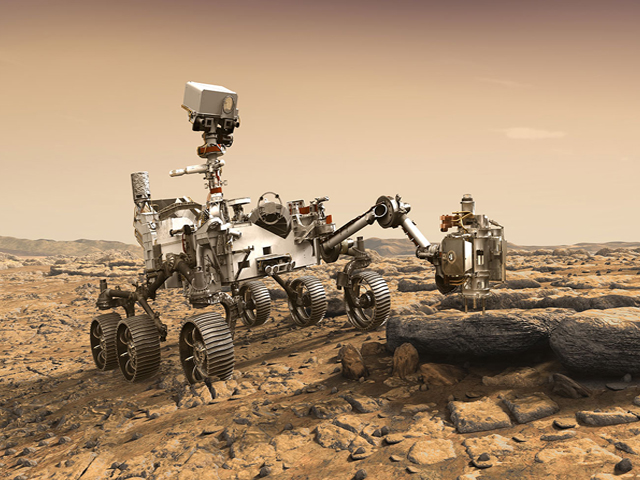


The NASA Curiosity Rover, which landed on Mars in 2012, has found ‘building blocks of life’ or organic molecules on the planet’s soil. The particles were found in a roughly 3 billion-year-old mud stone soil sample taken from the Gale Crater, NASA announced on Thursday. The rover has also detected traces of methane gas in the Martian atmosphere and found a seasonal variance in the presence of Methane in the atmosphere.
However, NASA scientists have emphasized that these organic compounds and molecules can also exist without life. These organic compounds work as “chemical clues” for the researchers about Mars, among st whom Methane is considered to be the simplest organic molecule because about 95 percent of the methane in Earth’s atmosphere is produced from biological activity. It is also present in other parts of the Milky Way that could host life, like Saturn and Jupiter’s moons Enceladus, Europa and Titan. But life formed there will be very different from how it is understood on the Earth.
Details of this new finding were published in the journal Science on Thursday, where it is stated that the researchers believe these findings to be “breakthroughs in astrobiology.” The Curiosity data is providing a more and more clear picture off how the conditions in Mars might have been, millions of years ago, which was more suitable for life.”With the new findings, Mars is telling us to keep searching for evidence of life,” said Thomas Zurbuchen, associate administrator for the Science Mission Directorate at NASA Headquarters. “I’m confident that our ongoing missions will unlock even more breathtaking discoveries on the Red Planet,” reported the CNN. Paul Mahaffy, study author and director of the Solar System Exploration Division at NASA’s Goddard Space Flight Center said, “We have greatly expanded our search for organic compounds, which is fundamental in the search for life.”
Curiosity found the samples about five centimeters below the surface in the 96-mile Gale crater, which was most likely formed by meteor impact about 3.5 to 3.8 billion years ago. It likely held a lake, and now includes a mountain. The rover then heated the samples to between 932 and 1508 degrees Fahrenheit and studied the organic molecules through gas analysis. The organic molecules included thiopene, methylthiophenes methanethiol, and dimethylsulfide, elements that are also found on sedimentary rocks of Earth. The researchers believe that these are fragments of larger molecules that were present on Mars billions of years ago, a researcher said.
“The Martian surface is exposed to radiation from space, both radiation and harsh chemicals break down organic matter. Finding ancient organic molecules in the top 5 centimeters of rock that was deposited when Mars may have been habitable bodes well for us to learn the story of organic molecules on Mars with future missions that will drill deeper,” said Jen Eigenbrode, a study author and research scientist at the Goddard Space Flight Center.
Curiosity Rover has used its Tunable Laser Spectrometer to measure the variation of methane level in the atmosphere at the Gale Crater, ever since it landed. Now, with five years of data from a single location, the scientists are now having answers – the seasonal variation to methane might be because it is being released from the Martian surface or from reservoirs beneath the surface, or could even be trapped in water-based crystals beneath the surface. The greenhouse gas might have supported a climate that sustained lakes on Mars, millions of years ago. The release of methane is an active process on Mars, which could suggest new things about what’s unfolding on the Red Planet.
Source : Financial Express
